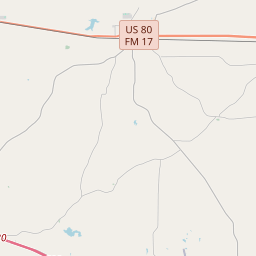Caddo Indian Communities in Wood County
Historical marker location:






Early in the ninth century, the Caddo, several affiliated groups of people with distinct dialects and customs, moved into parts of present Arkansas, Louisiana, Oklahoma and Texas. Complex societies based on successful trade, advanced agriculture and intricate rituals soon dispersed along the rivers and creeks of the region. By the 1540s, European explorers met their descendants and wrote the first descriptions of those called Kadhadacho, meaning "Real Chief" or "Real Caddo." Locally, the Hasinai tribe of the Caddo Nation populated the area. As American settlers moved into northeast Texas in the early 19th century, they encountered the confederacy of tribes called Caddo and found cultural evidence of their ancestors, including pottery, stone tools and burial mounds. Such artifacts confirm that the Sabine River and its tributaries have supported life here for centuries. By the early 1840s, the Caddo had moved out of their ancestral homeland, settling in 1855 at the Brazos Indian Reservation near Graham (150 mi. W) and in 1859 at the Washita River in Indian Territory (Oklahoma). Today, the Caddo Nation headquarters is in Binger, Oklahoma, where members maintain cultural traditions through pottery, song, dance and language. Archeologists, ethnologists and others have worked to reconstruct the early, unrecorded history of the Caddo. Artifacts, landscape features, folklore and comparative historical accounts help tell the story of people who flourished here for a thousand years. Archeological sites discovered within the Mineola Nature Preserve on the Sabine River help enrich the record of significant contributions the Caddo made to the cultural history and development of the state of Texas. 2007 Marker is property of the state of Texas
As one of the most visible programs of the Texas Historical Commission (THC), historical markers commemorate diverse topics in Texas history, including: the history and architecture of houses, commercial and public buildings, religious congregations, and military sites; events that changed the course of local and state history; and individuals who have made lasting contributions to the state, community organizations, and businesses.
Texas is also home to the world's largest honky-tonk, Billy Bob's Texas in Fort Worth. The venue covers three acres and can hold up to 6,000 people.
In the early 1800s, the region attracted settlers from the United States who were drawn to the lush forests and abundant resources. The first permanent European-American settlement was established in 1846, and it was named Quitman after John A. Quitman, a prominent politician of that time.
During the Civil War, Wood County played a significant role in supporting the Confederacy. Many residents enlisted in the Confederate Army, and the area became a center for military recruitment and training. After the war, the county suffered economically, but with the introduction of the railroad in the late 19th century, the economy began to recover.
Wood County's economy primarily relied on agriculture, with the growth of cotton, corn, and timber industries. The establishment of sawmills and the development of the timber industry brought prosperity to the area. In the early 20th century, the discovery of oil and gas reserves further fueled the county's economic development.
Today, Wood County continues to be an important agricultural and industrial center in Texas. The county's history is evident in its charming small towns, historic sites, and natural beauty. The strong sense of community and appreciation for the region's heritage are still evident today, making Wood County a vibrant and inviting place to visit or live.
Wood County Timeline
This timeline provides a condensed summary of the historical journey of Wood County, Texas.
- 1850: Wood County is established by the Texas legislature.
- 1852: The first courthouse in Wood County is built in Quitman.
- 1860: The population of Wood County reaches 4,867.
- 1875: The railroad reaches Wood County, boosting economic growth.
- 1895: The county seat is moved from Quitman to Mineola.
- 1920: The population of Wood County peaks at 19,109.
- 1930: The Great Depression hits Wood County, causing economic hardship.
- 1958: Lake Holbrook is completed, providing a recreational area for residents.
- 1970: Wood County's population decreases to 12,230.
- 1983: Holly Lake Ranch, a gated residential community, is established in Wood County.
- 2000: The population of Wood County surpasses 37,000.
- 2019: Wood County experiences steady growth and continues to be a thriving community.